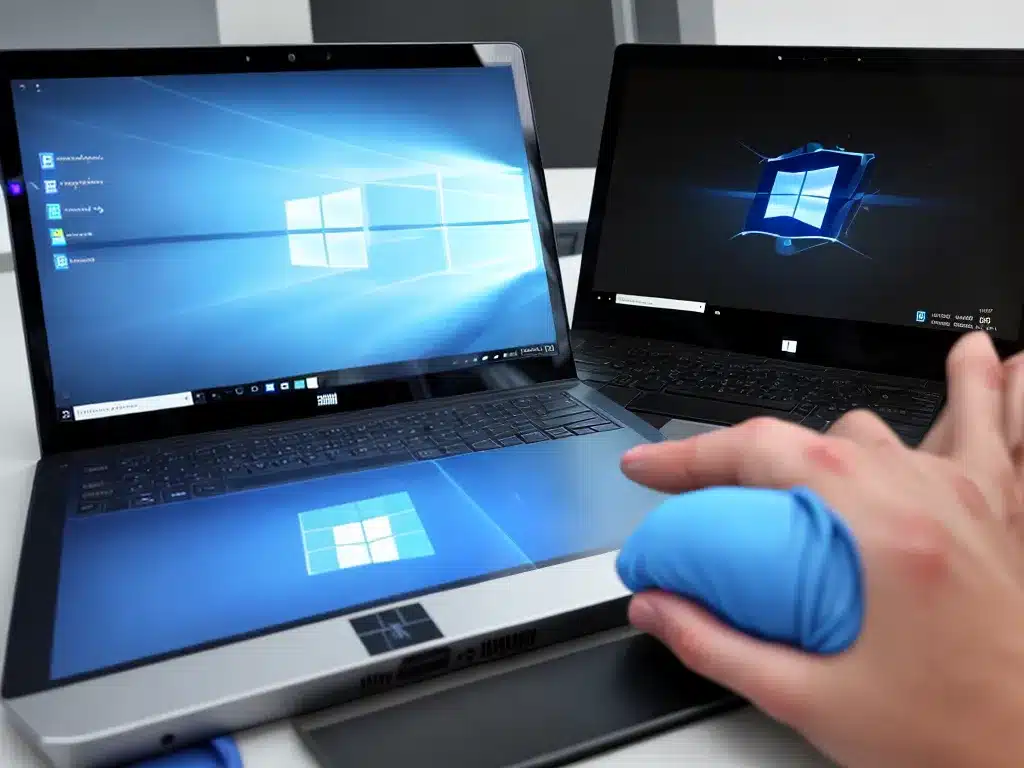
What is Superfetch?
Superfetch is a Windows service that preloads commonly used programs into memory to help speed up boot times and application launches. It monitors which applications you use frequently and preloads them into RAM so they can launch faster when needed.
While useful, Superfetch can sometimes cause high disk usage as it aggressively preloads data from your hard drive into memory. This can slow down your system and cause 100% disk usage issues.
Why Does Superfetch Cause High Disk Usage?
There are a couple reasons why Superfetch may cause your disk usage to spike in Windows 10:
-
Aggressive preloading – Superfetch is constantly monitoring which apps you use and aggressively preloads their data and binaries into memory so they launch faster. All this disk read activity can spike your disk usage.
-
Indexing – Superfetch also indexes your hard drive to build a usage model of your common applications. This indexing process can utilize a lot of disk resources.
-
Memory pressure – If you don’t have enough RAM, Superfetch may need to constantly swap data in and out of the pagefile on your hard drive, increasing disk activity.
-
Faulty hardware – Issues with your hard drive itself can also be exacerbated by Superfetch’s activity leading to high disk usage.
So in summary, Superfetch is just doing its job of preloading data into memory for faster performance, but this can unintentionally spike disk usage to 100% at times, slowing your system.
How to Fix High Disk Usage by Superfetch
Here are some steps to fix high disk usage caused by Superfetch in Windows 10:
1. Temporarily Disable Superfetch
You can disable Superfetch entirely to see if it resolves your high disk usage issues:
- Open the Run dialog (Windows + R)
- Type
services.mscand press Enter - Find the Superfetch service in the list and double click it
- Change the Startup Type to Disabled
- Click OK to save the changes
- Restart your computer
This will disable Superfetch and prevent it from running on your system. Monitor your disk usage to see if it has improved.
2. Change Superfetch Configuration
Alternatively, you can tweak Superfetch’s configuration to be less aggressive rather than disabling it completely:
- Open the Run dialog and type
regedit.exe - Navigate to
HKEY_LOCAL_MACHINE\SYSTEM\CurrentControlSet\Control\Session Manager\Memory Management\PrefetchParameters - Double click on EnableSuperfetch and set it to 0 to disable prefetch
- Double click on EnablePrefetcher and set it to 0 to disable prefetch indexing
This will turn off the more intensive parts of Superfetch that can cause high disk usage like preloading and indexing, while still allowing it to run.
3. Clean Up Superfetch Files
Deleting Superfetch’s cached data files can also help reduce disk usage:
- Open File Explorer and navigate to
C:\Windows\Prefetch - Select and delete all files in this folder
This clears out the cached preload data that Superfetch has built up over time.
4. Use Task Manager To Investigate
Open up Task Manager and sort processes by disk usage to see if any particular process is spiking unusually high. This may help narrow down what is causing the high usage issue.
Look for anything consuming a very high amount of disk such as svchost.exe or System. This could indicate a problem with Superfetch or something else.
5. Check Hard Drive Health
Open the Disk Defragmenter tool and click on your hard drive. Look at the Volumes tab – this will show you the drive’s health statistics.
Check for high Fragmentation or a high number of Bad Sectors. These can indicate a failing hard drive that is running slowly and causing high usage.
It may be time to replace your hard drive if it is in poor health. An SSD upgrade can also help since it does not fragment and is much faster than a hard disk.
6. Add More RAM
Adding more RAM to your system allows Superfetch to cache more data in memory rather than reading from disk. This reduces disk usage by shifting the workload into faster memory.
8-16GB of RAM is recommended for good performance these days for most PCs.
7. Adjust Virtual Memory Size
Make sure your virtual memory (pagefile) size is managed appropriately and not unnecessarily large:
- Open System Properties
- Click Advanced system settings > Advanced tab
- Under Performance click Settings
- Select the Advanced tab
- Under Virtual memory select Automatically manage paging file size for all drives
Letting Windows automatically size your pagefile is best, rather than setting a fixed size. This ensures it can grow and shrink as needed.
When to Disable Superfetch Completely
Disabling Superfetch provides the most guaranteed way to resolve high disk usage, but Windows will launch programs a bit slower.
You may want to disable it completely if you have:
- An older hard disk drive
- Low amounts of RAM such as 4GB or less
- A laptop or tablet with limited resources
- No need for blazing fast application launch times
For most modern systems, tweaking Superfetch configs is preferable over fully disabling it. But disabling it can provide immediate relief if you are regularly seeing disk usage stuck at 100%.
Conclusion
- Superfetch aims to speed up your PC by preloading frequently used programs into memory
- This aggressive preloading behavior can sometimes unintentionally cause high disk usage
- Options like tweaking Superfetch settings, adding more RAM, or upgrading your hard drive can help mitigate these disk usage spikes
- Fully disabling Superfetch is a last resort if you need immediate relief from constant 100% disk usage
Carefully tuning Superfetch can provide a nice balance between faster load times and reduced disk usage for optimal Windows performance.












